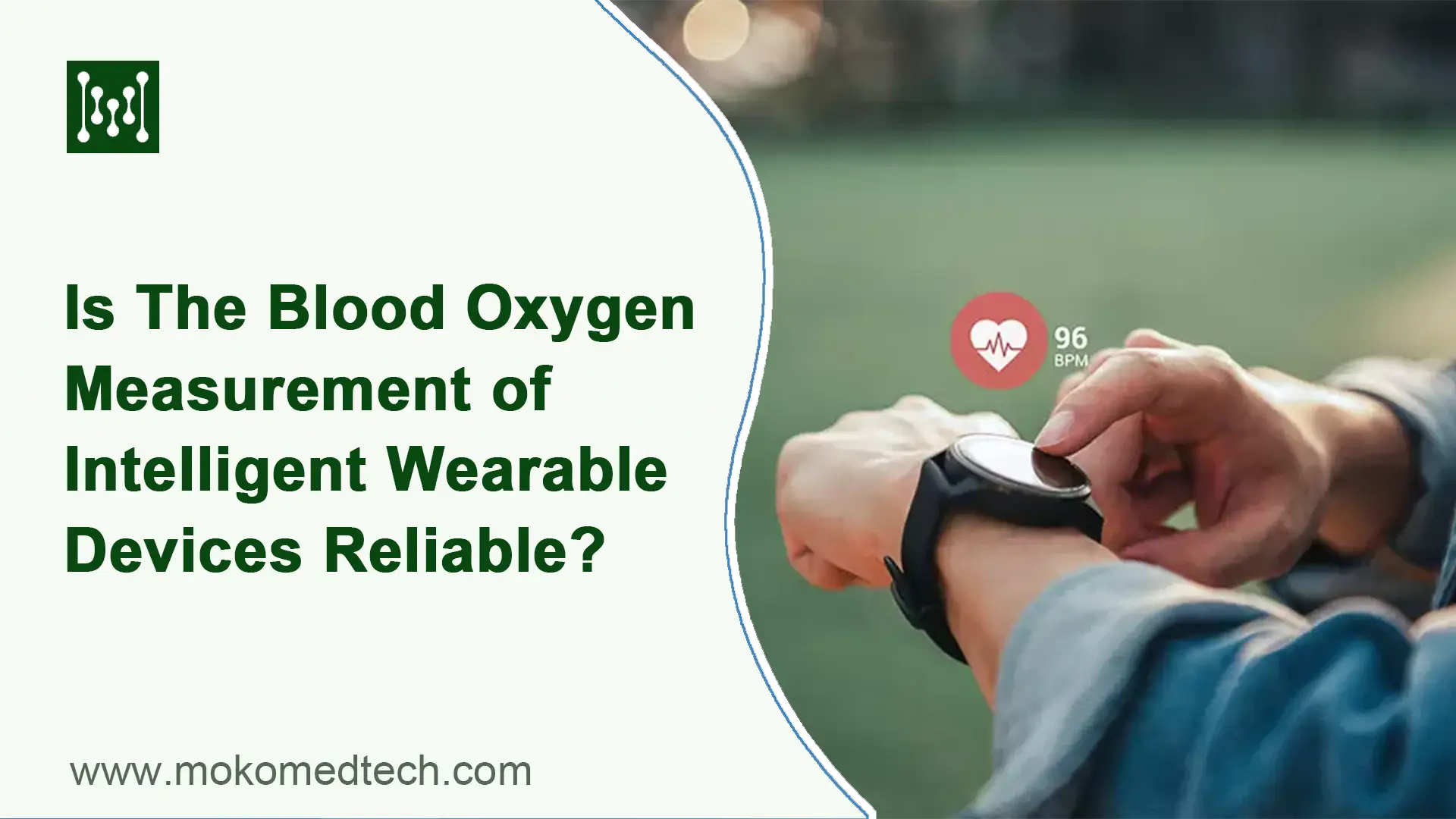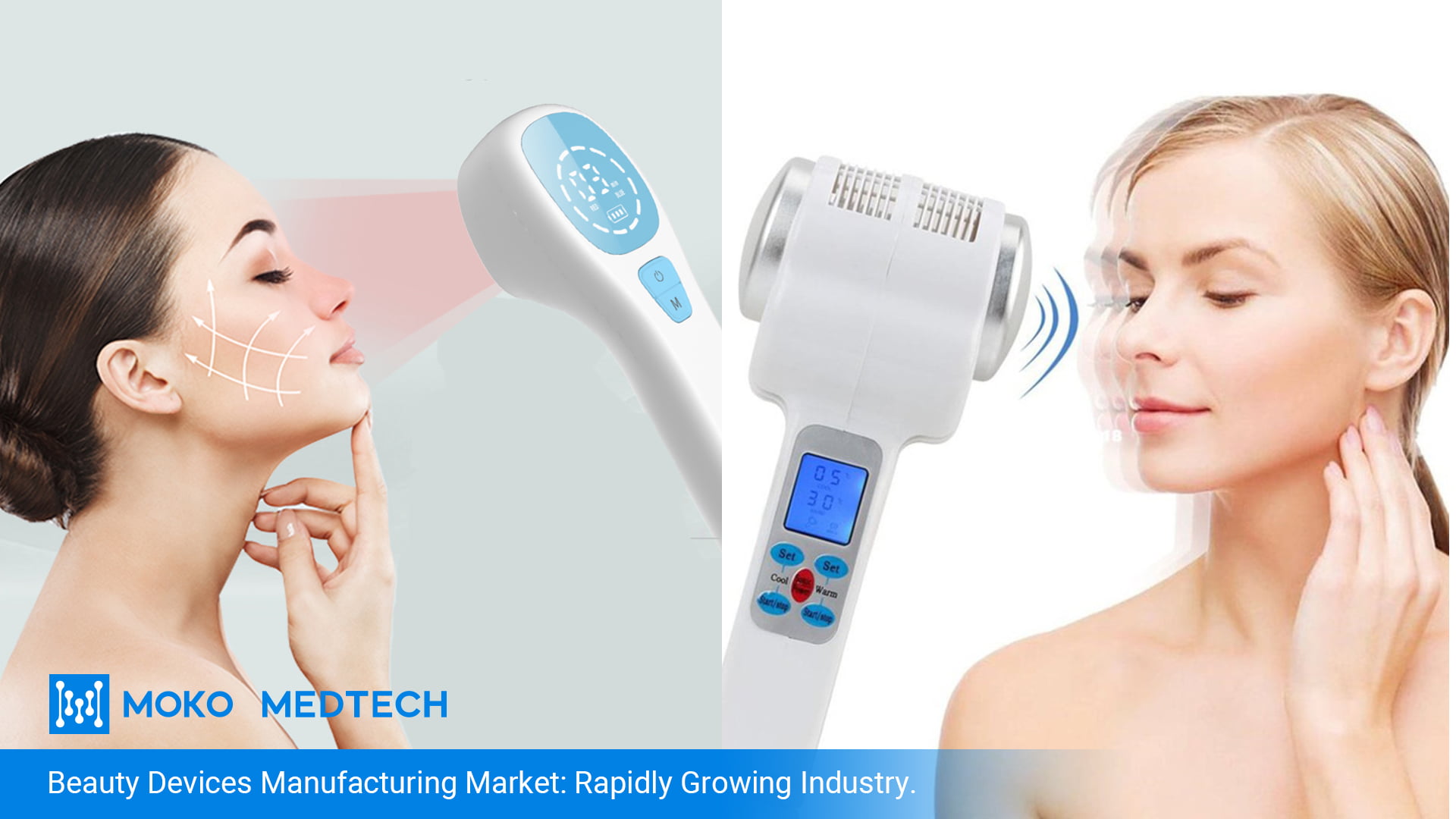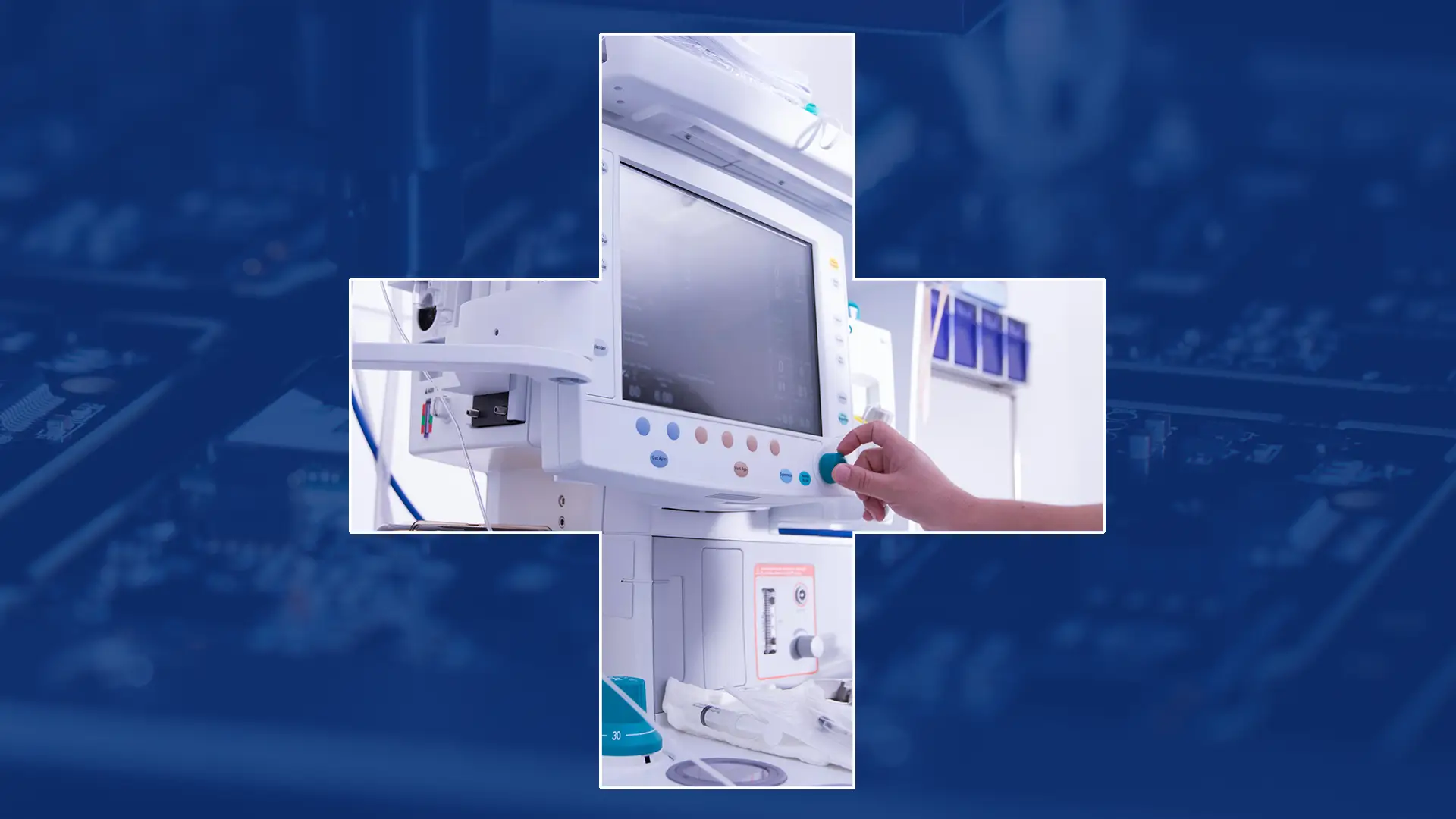What is Pulse Oximeter
Pulse oximeter is a medical instrument to determine oximeter saturation based on the change of light absorption during arterial pulsation.
Heart rate, blood pressure, respiratory rate, body temperature and blood oxygen are key indicators of human health. Blood cells are the most important part of the blood, which is responsible for carrying oxygen from the lungs to all parts of the body. The most important part of blood cells is hemoglobin. And red blood cells can absorb oxygen basically by the combination of hemoglobin and oxygen. The amount of oxygen hemoglobin contains is called oxygen saturation. Oxygen in red blood cells is essential for the normal operation of all lives. If blood oxygen levels are low, people are likely to suffocate, go into shock, and even die.
A pulse oximeter provides a non-invasive way to measure blood oxygen saturation or arterial hemoglobin saturation. What’s more, a pulse oximeter can also measure heart rate. Besides, the pulse oximeter is so small and convenient that it can be very convenient to use at home.
How Do Pulse Oximeter Works?
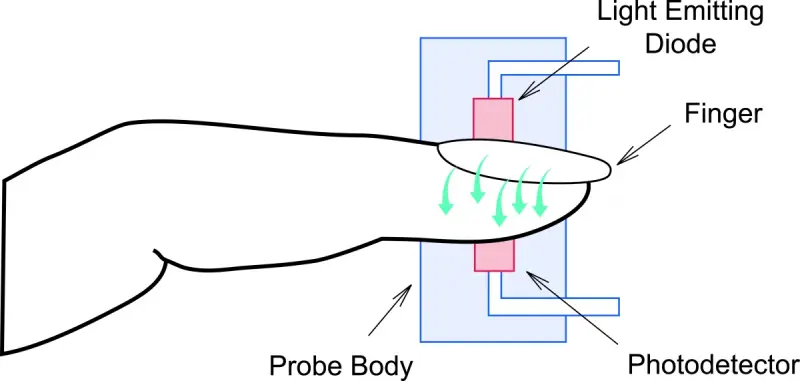
A pulse oximeter is a small instrument that measures the amount of oxygen in the blood. It can provide accurate blood oxygen readings in different scenarios, including hyporespiration, emphysema, deep vein thromboembolism, and so on.
The pulse oximeter consists of a transmitter, a probe, an electronic receiver and a graphic expression display. Generally, it uses microwaves to measure oxygen levels in the blood. These microwaves can be absorbed and reflected by the blood. It can read the content of the blood from the detector and display it graphically.
The probe will emit microwaves, which can be of a variety of frequencies, onto the measuring site. Then, microwaves pick up signals from hemoglobin and blood cells in the blood.
If the oxygen level in the blood is too low, it may indicate the presence of a medical condition, such as a lung disease. The pulse oximeter allows the patient to understanding the health status of my body. At the same time, changes in oxygen levels in the blood can be observed, which helps doctors assess the patient’s condition and the effect of treatment. All of this helps patients and doctors to take early action to reduce the risk of deterioration and death.
Why Should Use Pulse Oximeter
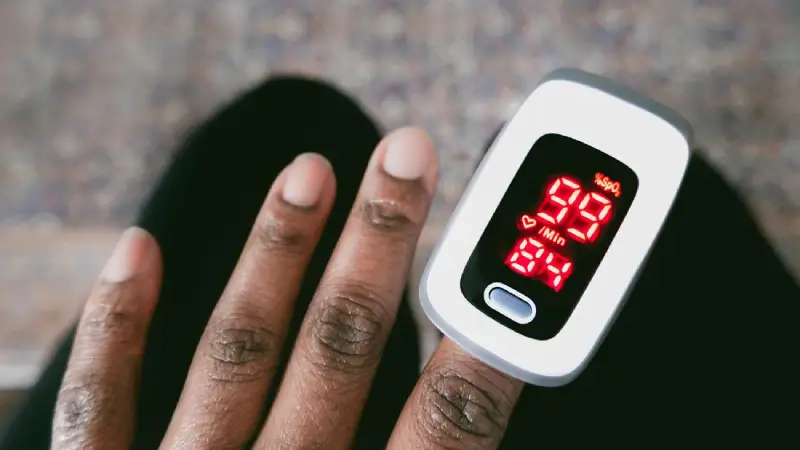
The purpose of pulse oximetry is to check how well your heart is pumping oxygen through your body. Many diseases can be determined by judging blood oxygen levels, especially during treatment. These diseases include: congenital heart disease, heart failure, heart disease, anemia, lung cancer, pneumonia, asthma, chronic obstructive pulmonary disease.
There are many different common use cases for pulse oximetry. It can
- Evaluating the efficacy of new lung drugs,
- Assess if someone needs to breathe,
- Assess the degree of help of the ventilator,
- Monitoring oxygen levels during or after surgical procedures requiring sedation,
- Determine the effectiveness of supplemental oxygen therapy,
- Assess someone’s ability to tolerate increased exercise in a new therapy
- Assess during a sleep study whether someone temporarily stops breathing while sleeping (for example in the case of sleep apnea).
During pulse oximetry readings, please place small clamp-like devices on fingers, earlobes, or toes. A small beam of light passes through the blood in the finger to measure the amount of oxygen. It does this by measuring changes in light absorption in oxygenated or deoxygenated blood. It’s an easy process. Therefore, a pulse oximeter can tell you your blood oxygen saturation level as well as your heart rhythm.
In addition, pulse oximeters are available both inpatient and outpatient. In some cases, your doctor may recommend that you use a home pulse oximeter.
Who Needs Pulse Oximeter

- Cardiovascular and cerebrovascular diseases: Patients with cardiovascular and cerebrovascular diseases are prone to cerebral hemorrhage, cerebral infarction and other symptoms. Therefore, the use of oximeters can help patients measure blood oxygen and pulse changes so that patients can receive timely treatment when blood oxygen fluctuations occur.
- People with respiratory diseases: When patients suffer from respiratory diseases, they may have difficulty breathing, lack of oxygen, and damage to vital organs such as the heart and brain. The use of pulse oximeters can monitor patients’ blood oxygen saturation, thereby reducing the incidence of severe respiratory diseases.
- Middle-aged and elderly people: With the growth of age, the physiological aging of human heart and lung organs may occur insufficient blood perfusion, and then physical discomfort symptoms. The perfusion index can be monitored by oximeter in time to avoid hypoxia.
- People with insufficient immunity: Overtime working, staying up late and other insufficient immunity will make bad effects on body organs, so there will be hidden dangers of various diseases. The oxygen content in the blood can be detected at any time through the oximeter to avoid sudden symptoms in the body.
The Advantages of MOKO MedTech Pulse Oximeters
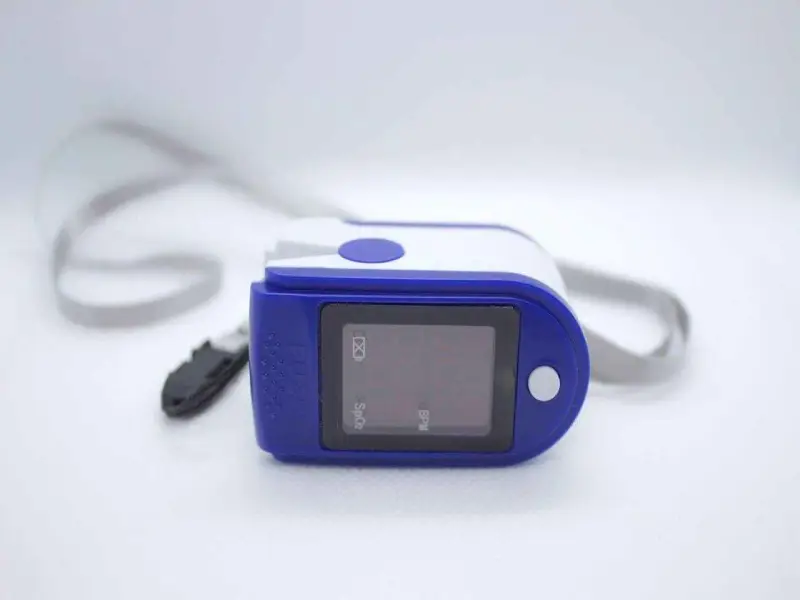
MOKOMetTech smart oximeter adopts the second-generation LEC PLUS optical frequency digital conversion technology, which can effectively improve the measurement accuracy under the condition of movement and weak perfusion. The design of waterproof splash, anti-drop and anti-movement is very convenient and practical. And the design of shading can shield the interference of environmental light on the measurement.
It can simultaneously detect blood oxygen level and heart rate index. With high-performance acceleration sensors, test results can be obtained in as little as 8 seconds. It comes with a two-colour OLED display which can be switched by the touch of a button. It displays fine and intuitive with ultra-low energy consumption. Besides, the small size is easy to carry and can be detected anytime, anywhere. The smart oximeter is configured red and infrared light to illuminate the finger and convert the light frequency into a number. This technique can effectively improve the accuracy of blood oxygen measurement. Meanwhile, the stepped pulse histogram showed a change of height with the pulse pulse, which helped to clearly reflect the pulse intensity at the time of detection.
In addition, equipped with a mobile APP and a cloud data platform, the smart oximeter can record the user’s measurement data every time. Moreover, these data will not only be stored in the cloud, but also give the user’s physical health evaluation and advice through the unique professional health algorithm of MOKO Technology. If you need it, you can request the data from the server through the mobile APP.
How to Use Pulse Oximeters
Install Pulse Oximeter
Pulse oximeter is a device that can measure blood oxygen saturation and pulse rate. It allows you to monitor your own or someone else’s blood oxygen and pulse rate. It is not only suitable for adults, but also ideal for monitoring children or very young patients, since it can quickly monitor their pulse and blood oxygen saturation changes.
First, you’ll need a computer,which comes with specialized software and can access the oximeter from an external USB port. If you are a nurse or professional, you can download the software . After installing the software, please connect the USB cable of the pulse oximeter to your computer. Then, the pulse oximeter can be used.
Use Pulse Oximeter
Typically, the steps of using a pulse oximeter include connecting the power supply, cleaning the finger, placing the finger in the sensor, and reading the recorded results.
A pulse oximeter is a device used to monitor blood oxygen saturation and heart rate. It is widely used in home care, sports, travel and other fields.
- Connect the power: Turn on the power of the device and plug in the sensor.
- Clean your fingers: Use warm water and soap to wash your fingers and dry them. If the finger has nail polish or needs to be shaved, it is best to wash your hands thoroughly before testing or choose the other finger with long nails for measurement.
- Read the recorded results: At this time, you should wait for the data of heart rate and blood oxygen saturation to be displayed on the screen. You can see the reading of tables or numbers at the same time. It takes about 15-30 secs for the test results. You can then write the readings down on paper or save them in a health record. Finally, remove your finger and put the device away.
- Finger into the sensor: Generally put the middle or ring finger into the device. And prioritize the bottom of the finger tip.
It is important to note that a pulse oximeter is not a substitute for a doctor or professional medical equipment. If you have symptoms of physical discomfort, you should go to the hospital in time for treatment.
Cleaning & Attention
The pulse oximeter should be kept clean during use. In particular, contact with emulsion or other lubricating oil should be avoided to prevent damage to the instrument. Sometimes there are errors, but it is usually still can work. You can set aside the error and fix it later. When in use, pay attention to discharge excess gas. Keep components such as sensors and electrodes clean. Moreover, the indicator is maintained to ensure the accuracy of the oximeter.
Finish
After use, the software of the pulse oximeter should be closed. Besides, the USB connection cable should be removed. Don’t forget to update the instrument’s data. Finally, store the pulse oximeter in a safe place.
Additionally, care should be taken to protect the sensor and electrode sheet when using the pulse oximeter. If misused, the instrument may be damaged, so improper use and untimely cleaning of the instrument should be avoided.
This is how to use a pulse oximeter. Pulse oximeter can provide accurate and rapid blood oxygen measurement for medical personnel. Once installed, it is simple and convenient to use. Therefore, in order to ensure more accurate measurement and instrument function, it is necessary to do a good job of the correct use of the instrument and regular cleaning, in order to obtain better results.
How to Interpret Pulse Oximeter Readings
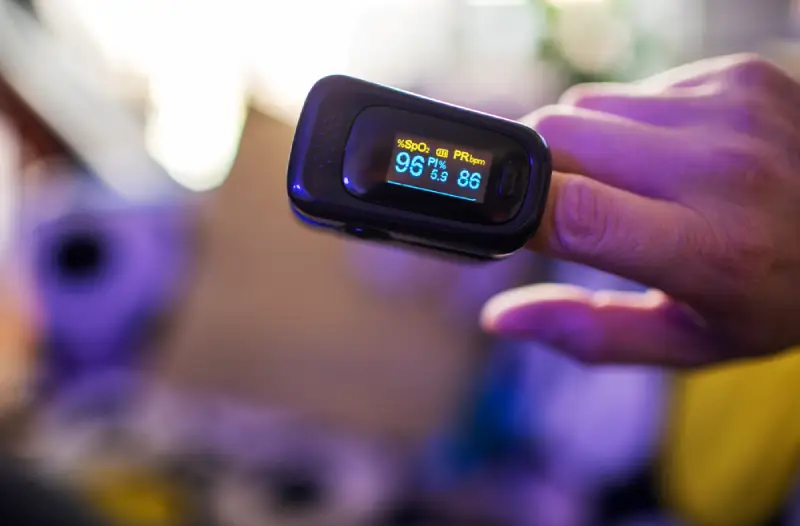
A high-quality pulse oximeter is very accurate, with an error of around 2%. For example, when a pulse oximeter reads 97%, the actual blood oxygen saturation may be 95%-99%. This is a completely normal error range.
Although it seems simple to use, many factors can affect its reading, such as too low skin temperature, the movement of the test site, and nail polish.
Normal people’s blood oxygen saturation is 95% and above. 92% or less is hypoxic. If the oxygen saturation of the blood is continuously below 89%, the organs of the whole body will be damaged due to lack of oxygen.
Healthy people do not need regular blood oxygen monitoring. If you do, be sure to take the test when the body is warm. When the child uses it, remember to hold the hand so that it cannot move. If the reading continues at 92% or below, the child’s overall condition should be considered to decide whether to go to hospital. If the child has a high fever, cough and poor mental state, it is recommended to seek medical attention immediately.
If the child is not sick at all, do not test the blood oxygen saturation in the first place. Secondly, if the test is not normal, you can repeat the test, and give other normal family members a few times. If the readings are all low, there is something wrong with the instrument but not the child’s health.
Healthy children do not need to keep a pulse oximeter at hom. More and more, it is not necessary to routinely measure their blood oxygen saturation. Extra preparation can cause unnecessary anxiety in parents.
Precaution of Using Pulse Oximeter
- To ensure accuracy, avoid using thumb and pinkie.
- It is not suitable for users with large finger size or larger than the measurement chamber size of the oximeter.
- Check that the environment should be free of combustible substances before use. And avoid too high or too low temperature and humidity.
- Avoid exposure to bright light and direct sunlight.
- Avoid infrared or ultraviolet radiation.
- Do not use this instrument in MRI examination.
- Avoid contact with organic solvents, fogs, dust, and corrosive gases. Do not use in the presence of flammable substances such as anesthetic gases.
- Fingers should be placed correctly. Put your finger fully into the probe, and the tip of your finger should be pressed against the silicone baffle. Adult oximeter is not suitable for newborns and infants.
- Avoid using arterial catheters or blood pressure cuffs or intravenously in the same area or limb which have them.
- In patients with microcirculatory disorders, the device may not measure properly. Please warm, knead and massage the patient’s fingers properly. Or, re-wearing the oximeter will improve the measurement results.
- Do not shake your fingers during use. The human body should not be in motion.
- The light between the oximeter’s photoelectric receiving tube and the luminescent tube must pass through the patient’s small arteries.
- There should be no light obstacles such as tape on the patient’s fingers at the position where the light path passes.
- Avoid inserting the probe directly with water on your finger.
- Do not repeatedly pull on the flexible cable connecting the upper and lower housing of the oximeter. Also, do not overstretch the spring to avoid damaging the equipment.
Conclusion
With the continuous development of electronic technology and innovative breakthroughs in communication technologies such as cloud computing, the Internet of Things and 5G, digital medical care has also been widely used and developed rapidly. Vital signs monitoring (VSM) features are increasingly being built into mobile phones, watches, headsets and other smart wearables.
These devices are capable of measuring a variety of vital signs and health indicators, such as body temperature, heart rate, respiration, blood oxygen saturation, blood pressure and body composition. Moreover, thanks to the excellent power control and portable experience, they make it a reality to continuously monitor the body 24 hours a day.
In recent years, the function of blood oxygen saturation detection has begun to appear on a large scale in smart wearable devices. The continuous optimization algorithm improves the accuracy of blood oxygen saturation detection data. Like smart watches and bracelets worn that can monitored our health for all day, pulse oximeter is providing life safety escort for human health anytime and anywhere.

